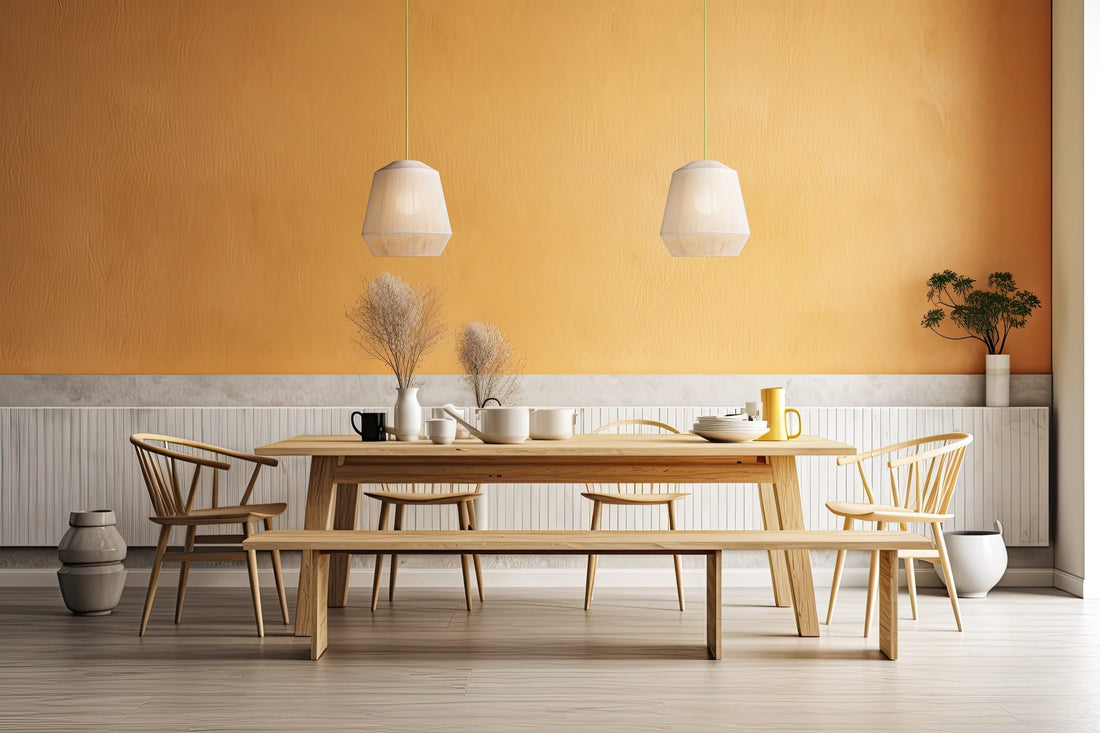
How to Pair Kitchen and Dining Lights
Meggan WynjaIf you have a space where the kitchen leads into the dining area, you have a fun task ahead — matching the kitchen and dining light fixtures! When considering your lighting design for these two areas, it’s important to create a seamless transition between spaces and deliver something functional and inviting.
Anyone can learn how to pair kitchen and dining lights — even enthusiastic DIYers. With a little help from Color Cord Company, you’ll unite your kitchen and dining spaces into a cohesive whole. Read on to get expert tips for kitchen and dining room lighting design!
1. Assess Your Space
Your first task is to evaluate your kitchen and dining area. Take note of the layout, dimensions, and natural light sources. Where will you need functional lighting for cooking? Where can you add ambient lighting for socializing? How you pair kitchen and dining lights will be defined by the way you layer your lighting.
You should also be looking at your existing aesthetic, color scheme, and furniture arrangement to inspire the style of kitchen and dining light fixtures you should choose.
2. Define Lighting Zones
Once you’ve done a general assessment, it’s time to narrow down exactly where you want to place each fixture to address the functionality you want to create. Your key zones will likely be the cooking area, kitchen island or prep area, dining room table, and any additional lounge zones, like a bar area or reading nook.
Each of these key zones has a specific purpose and requires a certain type of lighting. Your kitchen island may need brighter lights to illuminate your work area for chopping, measuring, and food prep, while your dining area would be better served by softer diffused light that makes a space comfortable, inviting, and intimate.
How you pair kitchen and dining lights will depend on how the light is used in each space, addressing both practical needs and aesthetic preferences. At this point, you may also want to consider how each fixture operates to ensure you can turn specific lights on or off so you only illuminate what you need with smart lighting.
3. Consider Types of Fixtures
There are many different types of fixtures for both dining room and kitchen areas that coordinate well, layer cohesively, and look pretty. But which styles work best together? Take a look at these recommendations for how to pair kitchen and dining lights.
Chandeliers
If you like traditional or mid-century lighting design, the chandelier is a classic choice. These dramatic pieces provide strong illumination with multiple bulbs radiating light from one place. Chandeliers create focal points in your space and guide the rest of your lighting design.
You can place one chandelier in the dining room and build off its aesthetic for smaller lights in the kitchen.
Pendant Lights

Incredibly popular along kitchen islands or anywhere else that offers a longer layout, pendant lights can be laid out one after the other to light up both kitchen workspaces and dining areas — especially if your table is a rectangle designed to host eight or ten people.
Wall Sconces
While wall sconces aren’t typically necessary in smaller spaces, if your dining room and kitchen are expansive, you may want to use these to make sure light reaches every single area. Wall sconces are a great choice for kitchen and dining light fixtures because they’re a compact, space-saving option that fits into your decor without distracting from the overall design.
4. Coordinate Styles
So you know where you want to place your light fixtures, and you know what types of fixtures you want. Now, it’s time to coordinate the styles, colors, and general aesthetic of your various pieces to ensure a cohesive design. Make sure you consider these key features when learning how to pair kitchen and dining lights.
Visual Continuity
As you walk through a space, you want your fixtures to match for visual continuity. You can do this by picking matching shades or cages, creating a color scheme, or choosing the same finish for each fixture. You don’t want your fixtures to clash with each other or with the decor already in your space.
Highlight the Focal Points
Focal points draw and lead the eye, creating unique visual elements that add interest to your space. You can use lighting to highlight fun design elements, like the wallpaper, art pieces, and accessories. You can even use lighting to show off a show-stopping countertop or your one-of-a-kind stove.
Create Contrast
How you pair kitching and dining lights also hinges on contrast. We’ve been talking a lot about matching all your fixtures to each other and the decor, but you want to add a counterpoint to the flow that feels intentional and results in a fusion of styles, colors, or shapes to stand out.
Express Yourself
Even though functionality is the primary goal of kitchen and dining light fixtures, self-expression allows you to tell your story in a visual way and makes your space somewhere you enjoy spending time.
Final Thoughts

With all this information in mind, it’s important to note that your lighting design should cater to your needs. If what you want from your space doesn’t follow all the tips above, don’t worry! Use our advice as a guide to create your final design.
Now that you know how to pair kitchen and dining lights, you can confidently move forward on your shopping and installation adventures.
Work With Us
At Color Cord Company, we cater to design professionals who already know all this stuff, as well as enthusiastic homeowners and DIYers who want to put their heart and soul into their home design.
Whether you want to learn how to pair kitchen and dining lights or are buying wholesale as a distributor, we’re here to help. Shop our entire store for our designs, or customize your own creations at Color Cord Company today!
